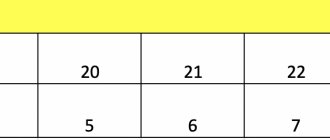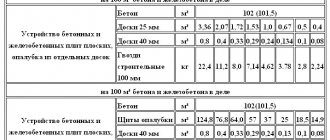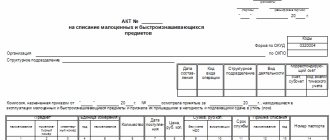Legal aspects of certification
The concept of a traditional grading system is introduced by current laws. This is the name of the procedure, the order, the content of which is regulated by the employer, making decisions independently.
There is no specific article on skills testing in the labor code. But in Article 81 of the same code they write that the basic rules can be approved in a local act issued for a specific enterprise.
An important nuance is that the employer organizes the development of regulations on inspections independently. But he is still obliged to take into account the opinion of the trade union. If there are no such associations, then nothing needs to be agreed upon.
Drawing up an order to create a commission
The order for the appointment of the certification commission, a sample of which can be found at the end of the article, is the main document that gives its members the necessary powers. The head of the organization can issue an order as a separate document or include such an order in the order for certification.
The form of the order is not approved by law, so each organization develops it independently. The order on the creation of a certification commission, a sample of which can be taken as a basis, must contain the following:
- document's name;
- date and place of publication;
- the type of commission being created, the basis for its creation with reference to the regulatory source;
- FULL NAME. and positions of persons included in the commission;
- order on granting commission members the authority to conduct personnel certification;
- Instructing members of the commission to conduct certification of employees in accordance with the approved lists and schedule, which may be attached to the order.
The order must be signed by the head of the organization, as well as, by way of familiarization, all persons included in the commission.
Who is required to undergo certification?
The laws do not restrict employers. They can select any categories of employees when organizing such checks. But in practice it is recommended not to include the following persons in the lists:
- Those with whom a fixed-term employment contract has been signed.
- Minors.
- Old age pensioners.
- Those who took parental leave worked for less than 1 year after leaving the previous such leave.
- If you have worked in the position for less than 1 year.
- Pregnant women.
The rest of the personnel are included on the lists to study the level of training without any problems.
Screen employees wisely
A transparent and flexible certification process will allow employees to clearly understand what is required of them and see the criteria for further career growth.
The main thing to remember is that everything is good in moderation. Don't evaluate staff just for the sake of evaluation. The company must clearly see what competencies an employee must have to work effectively. And certification is just one of the tools, along with training and motivation management, on the way to making your employees better.
Good luck with your review!
Got a question? Write to us at or in the comments!
Author of the article
Types of certification
Depending on the timing of the certification events, they can be divided into 2 large groups.
| Planned, or regular. | Such inspections are organized according to a schedule, at certain time intervals. An example is an analysis of employee performance every few years. The manager himself decides what the frequency will be. |
| Unscheduled, extraordinary | Allows organization on an emergency basis. For example, when an organization changes staffing or wages, a whole batch of defective products is identified. Qualification testing may be organized only for specific categories of employees. Moreover, if a translation is being carried out that requires an event. |
Some managers conduct one-time assessments. Including for employees who are just being hired.
Certification commissions: what are they?
In addition to commissions created directly at enterprises to assess the competence of workers, there are commissions created for certification in certain industries, for example:
- The interdepartmental certification commission of expert technicians functions to implement the provisions of the law of April 25, 2002 No. 40-FZ on compulsory motor third-party liability insurance. Its main task is to assess the professionalism of experts who conduct an independent examination of vehicles.
- The Higher Certification Commission (HAC) is the central body responsible for ensuring a unified state policy in the field of certification of scientific and scientific-pedagogical workers and awarding them degrees and academic titles. This All-Russian Certification Commission is subordinate to the Ministry of Education and Science of the Russian Federation.
- A unified certification commission created to conduct an exam to verify the qualifications of applicants for an auditor certificate (Order of the Ministry of Finance of the Russian Federation dated May 27, 2010 No. 51n).
- The State Certification Commission is a competent body created in higher educational institutions to control the examination commissions for the certification of graduates. The chairman is appointed by the Ministry of Education of the Russian Federation.
Order of conduct
An important condition for checking the suitability of employees for positions is clearly defined responsibilities. Usually, for this purpose, an employment contract is properly drawn up. The employer is responsible for providing conditions for quality work performance.
Employees will not be able to perform functions properly if they do not have at least some of the tools and equipment and information materials. In this case, there is a high probability that the dismissal will be considered illegal if it takes place later.
To establish inspection rules, the employer issues a separate internal document. Employees are familiarized with this provision and put their personal signatures on it. Subordinates cannot be punished for non-compliance with established rules unless they are familiarized with the original documents.
Procedure for certification by employees
For timely certification and recertification of employees who must service electrical equipment and electrical installations during work, a certification schedule is drawn up, which is approved by the head of the enterprise. According to this schedule, knowledge testing is carried out.
Who is assigned group 2 electrical safety?
During certification, the inspection may be carried out by a commission that is not in full composition. The presence of the chairman or deputy chairman at the examination is mandatory. Also, at least two examiners must take the exam together with the chairman.
Attention! The level of electrical safety knowledge is tested for each employee individually.
The amount of information the knowledge of which is tested during the exam is determined by the head of the enterprise. Questions are selected taking into account the job responsibilities of the person being certified, as well as the nature of the work he performs in production. During the exam, knowledge of the regulatory documentation that the employee must use during the performance of his official duties is necessarily tested.
The examinee must know the rules for the technical operation of electrical installations (according to his approval group), documents on electrical, fire and fire safety rules, as well as regulatory and operational documentation that is in force at the enterprise. In addition, he must be able to provide first aid in case of electric shock to a person.
If an applicant passes the exam for category 5 of admission, then he must have knowledge about the design of electrical installations with which he must work, know the rules of their operation, as well as be able to use protective equipment and know the rules for checking the functionality of protective equipment.
The knowledge test can be taken in the traditional form. In this case, the examinee selects an exam ticket, then he is given time to prepare for the answer, and after that the employee answers the questions that are on the ticket. The commission assigns a grade for the correctness and completeness of the answer. It is also allowed to use electronic computers as an examiner. In this case, the exam is conducted in test form. After answering the last question, the computer program automatically assigns a grade. However, according to the Rules, it is prohibited to use a computer in the case of an initial knowledge test.
There are quite a large number of servers on the Internet with test materials intended for preparation for passing the future exam, as well as for conducting the exam itself.
Based on the result of passing the exam, the commission makes a decision on the employee’s compliance with one or another electrical safety group. If the exam is passed with a positive mark, then employees are issued an appropriate certificate.
Electrical safety certificate
The exam results for each employee must be recorded in a specialized journal, indicating the grade that the examinee received, the date of passing the exam and the admission group received. The recording is certified by all members of the commission.
If the exam is conducted using a computer, then information about the test results must also be recorded in the journal.
If a computer test program gives an unsatisfactory grade, the test taker has the right to challenge it. In this case, the examinee proves the level of his knowledge by answering the examiners’ questions. At the end of the interview, the final grade is entered into the journal.
Recording the certification result in a journal
Thus, a properly selected staff of the certification group will allow you to quickly and efficiently test workers’ knowledge on issues related to safe work with electrical equipment. This will prevent the admission of untrained personnel to work that involves electric shock to a person.
Preparation
Employee training is also a prerequisite. They must receive information about the essence of the procedure. After this, certain actions are performed:
- Compiling lists of event participants.
- Drawing up characteristics for each or other document, which provides a detailed description of the work.
- Approval of the certification schedule and composition of the commission by appropriate order.
- Certification
Each employee is allowed to perform the following activities:
- Conversation.
- Passing the test.
- Study of characteristics or sheet for analysis.
All information on the results is entered into a special protocol. At the final stages, the information that was obtained is discussed. After this, a decision is made for each of the subordinates, and the written forms are supplemented with information. The decision made is also communicated to those who were subjected to such verification.
The personal card records the result that was achieved during the certification.
When the certification is completed, the manager makes a decision as to whether the employee is suitable for the position. The order records final thoughts on this matter.
The tasks of the certification commission include:
- formation of a regulatory and reference base for certification;
- setting qualification requirements;
- preparing questions for test tests;
- determining the suitability of a particular employee for the position he occupies;
- making a decision based on the results of testing;
- preparation of necessary documents;
- preparation of the final report.
Read also: Minutes of the meeting of the certification commission
Certification and its results
Based on the results of its work, the commission can issue several recommendations:
- Cash incentive.
- Application of punishments.
- Transfer to another position.
- Assignment to a higher rank.
- Increase or decrease in wages.
- Dismissal.
The manager should not follow these directions without controversy. He only takes note of the information received. If it is decided that the qualification level does not correspond to the position, the option of sending the citizen to retraining courses is acceptable. Or a mentor is assigned to such an employee.
Those for whom the commission has recommended transfer to a higher position may be included in the personnel reserve. This is a relevant solution, for example, if there are currently no suitable vacancies.
If a decision is made to dismiss a citizen, an offer of another position, according to the current level of skills, becomes a mandatory condition. The main thing is to make such proposals in writing in accordance with all requirements.
What are the purposes of employee certification?
Currently, there are a number of federal laws and other regulatory legal acts that establish the obligation of employers to periodically conduct certification of certain categories of employees and the procedure for its implementation.
For example, certification of state civil servants is carried out in accordance with Federal Law dated July 27, 2004 N 79-FZ “On the State Civil Service of the Russian Federation”, in the manner established by Decree of the President of the Russian Federation dated February 1, 2005 N 110 “On certification of state civil servants” civil servants of the Russian Federation." A number of industries have regulatory legal acts that regulate the procedure for certification of certain categories of workers: in transport, industry, education, healthcare, etc. At the same time, in relation to hundreds of thousands of commercial organizations of various industries and types of activities, neither laws nor regulations establishing the procedure for certification of employees have been adopted.
At the same time, with the formation and development of market relations and growing competition in the market of goods and services, an increasing number of their managers are turning to personnel certification as one of the important areas of personnel policy. These leaders found themselves in a legal vacuum: the legal acts adopted under the previous social system were clearly not suitable for application in modern conditions, and there were no new acts.
In the current conditions, the heads of organizations, in accordance with Part 2 of Art. 81 of the Labor Code of the Russian Federation has to independently regulate the procedure for preparing and conducting certification of its employees. This problem can be solved by the adoption by the head of the organization, taking into account the opinion of the trade union committee, of a local regulatory act - the Regulations on the certification of employees.
The attitude of employers towards certification of employees in post-Soviet times changed depending on changes in the state of the country's economy and the tasks facing employers. During the years of the deep economic crisis that hit the country’s economy, many employers fired a large number of workers who had become unnecessary to them, not due to a reduction in numbers and (or) staff, in which these workers were paid compensation in the amount of two to three average monthly earnings, but based on the results of biased certifications. In the latter case, compensation is not paid to dismissed employees.
This attitude towards personnel certification began to change among employers as the economy revived in the process of establishing market relations in the country and the development of competition between producers in the market of goods, services and labor.
The change in the attitude of employers towards the goals of personnel certification was expressed in the fact that, as a result of its results, they began to dismiss those employees who retained their jobs during the crisis years, but were unable to adapt over the intervening time due to personal reasons to the sharply changed working conditions.
The limit on layoffs was thus exhausted, and employers learned from their own experience that constant personnel renewal does not lead to the desired results, especially since the skilled labor required by employers has become an acute shortage in the labor market. In these conditions, employers began to realize that materials obtained as a result of certification are the main source of information about the professional and qualification composition of personnel, their quality characteristics, directions and content of work to improve personnel.
In accordance with such ideas of employers, they began to perceive the purpose of certification differently - not only and not so much to determine the professional suitability of employees, but to obtain the information necessary to justify and develop a personnel development policy. For example, at OAO Gazavtomatika, information obtained as a result of periodically conducted certification (managers and specialists once every two to three years) is used for the following purposes: - formation of an internal personnel reserve; targeted personnel development; personnel requirements planning; replenishment of the bank of ideas; satisfying the needs of employees for recognition by management; adjustment of HR strategy and tactics; optimization of organizational structure; development of corporate culture; optimal placement of personnel; motivation and stimulation of employees.
Currently, an increasing number of employers are turning to employee certification as one of the main directions for implementing personnel policies. According to these employers, recognition of an employee based on the results of certification as not corresponding to the position held or the work performed is, first of all, an omission of the administration. How could it happen that an unsuitable employee was hired and allowed to work, but if necessary, his qualifications were not improved, etc.?
For such employers, personnel certification is a means of identifying the potential capabilities of employees who have undergone appropriate selection when hiring, and determining areas for improving their professional qualities, but not the dismissal of employees, although this certainly occurs.
Whether these opportunities will reveal themselves and whether they will receive further development depends not only on the employee himself, but also, first of all, on the conditions in which he carries out his work activity. And these conditions are multifaceted. These include the content of work, its equipment and organization, forms and systems of remuneration, material and moral incentives, social protection, retraining and advanced training, psychological climate in the team, etc.
Working conditions are created by the employer. The better these conditions are, the more favorable the opportunities for developing a person’s ability to work. Moreover, the more favorable the opportunities for developing a positive and active attitude of the employee towards improving his professionalism. In other words, the employee’s qualifications, education, age and other characteristics must be actively sought after by the employer. This demand should manifest itself in systematic work to create, and then, as necessary, improve favorable working conditions.
Then the labor potential of workers in the form of their qualifications, education, etc. will be able to get the opportunity for their manifestation and further improvement in highly productive work that meets the employer’s requirements, which should not be arbitrary. They must correspond to the level of organization of production, labor and management that has developed at the enterprise. Otherwise, if such requirements are exaggerated, the employer’s personnel policy will not only not achieve the desired result, but, on the contrary, will lead to various kinds of protests and opposition from the main part of workers, trade unions and will ultimately reach a dead end.
Information on evaluation commissions
The following persons usually participate in special commissions:
- The authorized representative of the organization responsible for the problem.
- Representatives from the trade union.
- Representative from the employer.
- A specialist whose work at an enterprise is related to labor protection.
The procedure is not complete without representatives of certifying organizations. If violations and errors are detected without such a participant, any conclusions and results will be considered illegal.
Such associations have certain responsibilities:
- Preparation of the final report. It indicates all the information collected during the organization of the event.
- Creating a list with jobs. This is necessary to assess working conditions and identify factors that have a negative impact. Then it is determined whether personal protective equipment is needed.
- Preparation of the necessary documentation. It has not only an organizational character, but also a normative one.
- Evaluation control. All activities aimed at analyzing the available data are carried out independently.
- Filling out certification cards is considered an additional responsibilities of certification commissions.
Development and approval procedure
Development is carried out either directly by the manager or, on his behalf, by a responsible employee of the organization. In many industries there are special acts regulating the certification procedure. For example, for teaching staff, the specifics are established by Order of the Ministry of Education and Science of Russia dated 04/07/2014 No. 276, for prosecutors - by Order of the Prosecutor General's Office of Russia dated 06/20/2012 No. 242. These nuances must be taken into account when developing the document.
By virtue of Part 2 of Art. 81 of the Labor Code of the Russian Federation, before approval, the project must be agreed upon with a trade union or other representative body of workers. After approval, the employer issues an order approving the regulations on the certification commission, and only then the document comes into force.










